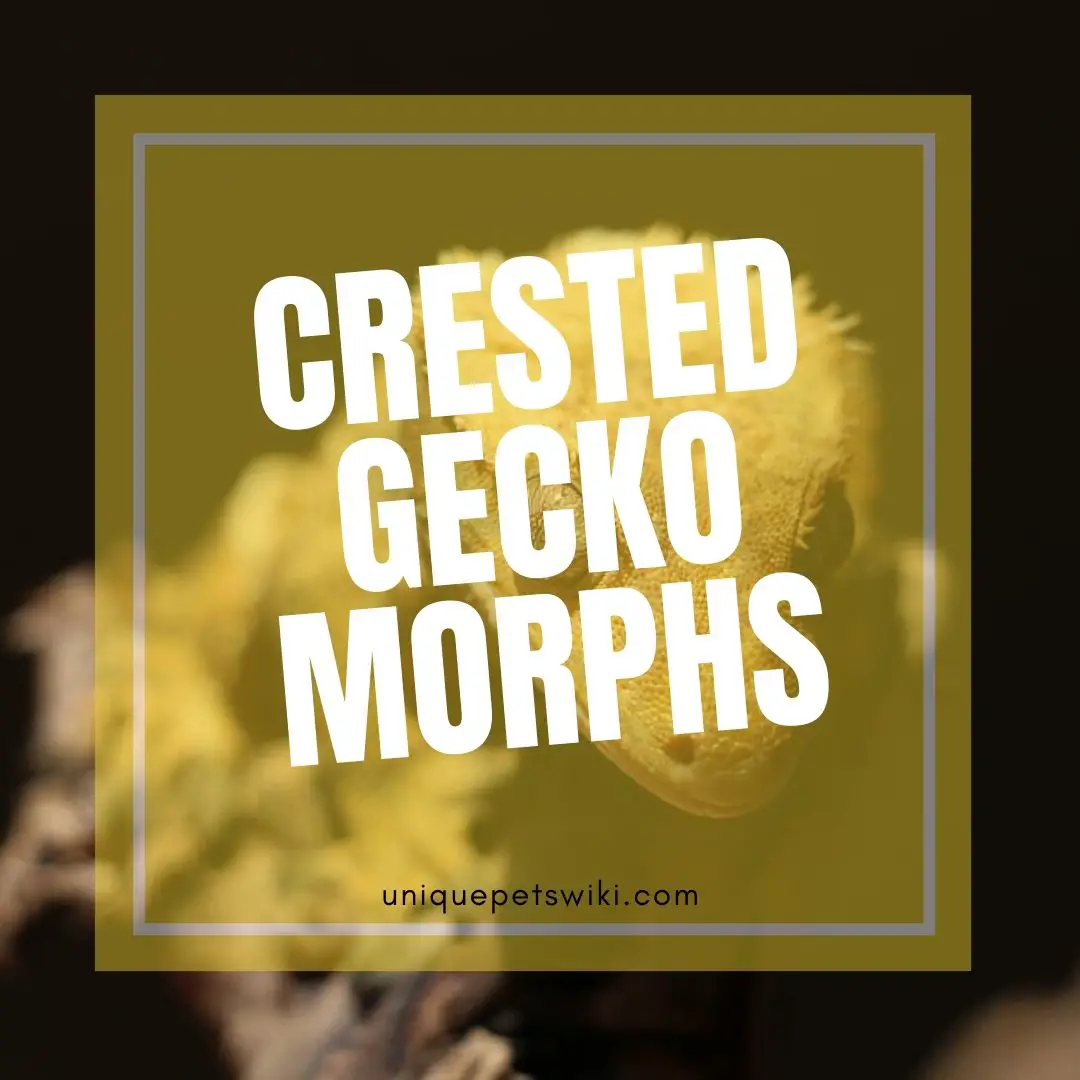Crested gecko morphs are expansive, and it can be confusing at times. Unlike in many other reptiles like leopard geckos, the genetics for crested geckos morphs are understood fairly well.
It is best to know that there is no scientific way to determine your cresties morph scientifically.
When buying a new crested gecko, you will notice a wide range of weird names for different patterns and colors.
However, this guide is created if you do not have any clue what the names mean or differentiate one from another.
In this article, you will get an insight into the different crested gecko’s morphs, how cresties change colors and crested geckos genetics.
Contents
Crested Gecko Morphs and Traits
Since crested geckos are polymorphic, you will find an infinite number of color and pattern variations to choose from.
Crested geckos in the wild have different morphs, but selective breeding has helped develop a large diversity of morphs.
Patternless Crested Geckos
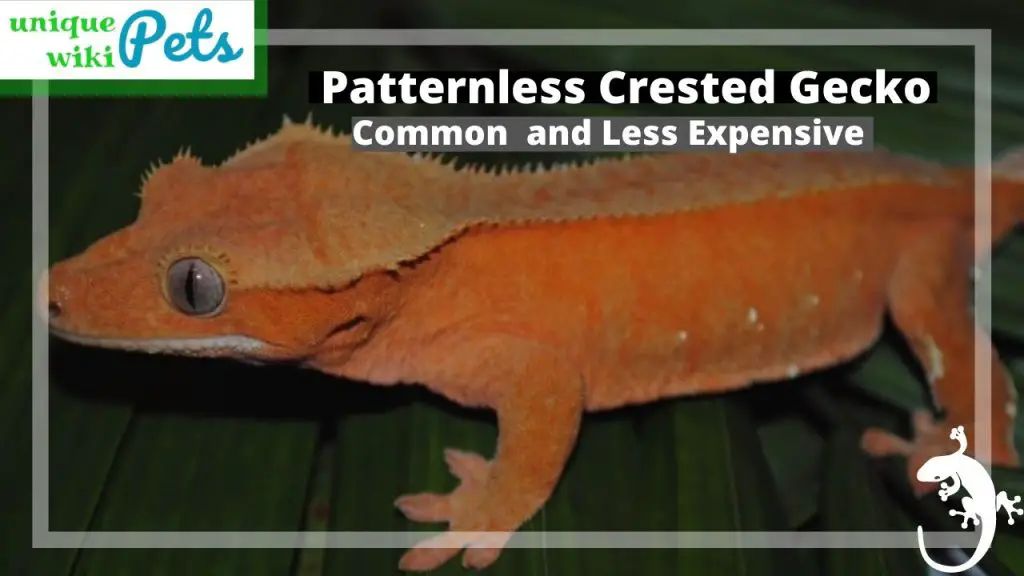
(Source: TikisGeckos YouTube)
As its name hintes, it is a crested gecko without any pattern on its body. It is often regarded as a basic crested gecko.
Although you may notice a row of cream-colored scales or slight fringing along the back of their hind legs, they usually have one solid color.
Patternless cresties come in varieties of size, shape, or color. They have varying colors, ranging from old-school buckskin brown to yellow, olive, red, cream, orange, and dark brown-black.
You can describe a patternless crested gecko in terms of its color, for instance, patternless olive. This morph is a commonly available morph of a crested gecko. It is usually the least expensive morph that you can buy.
Our Latest Video
Let’s continue reading
Tiger Crested Geckos
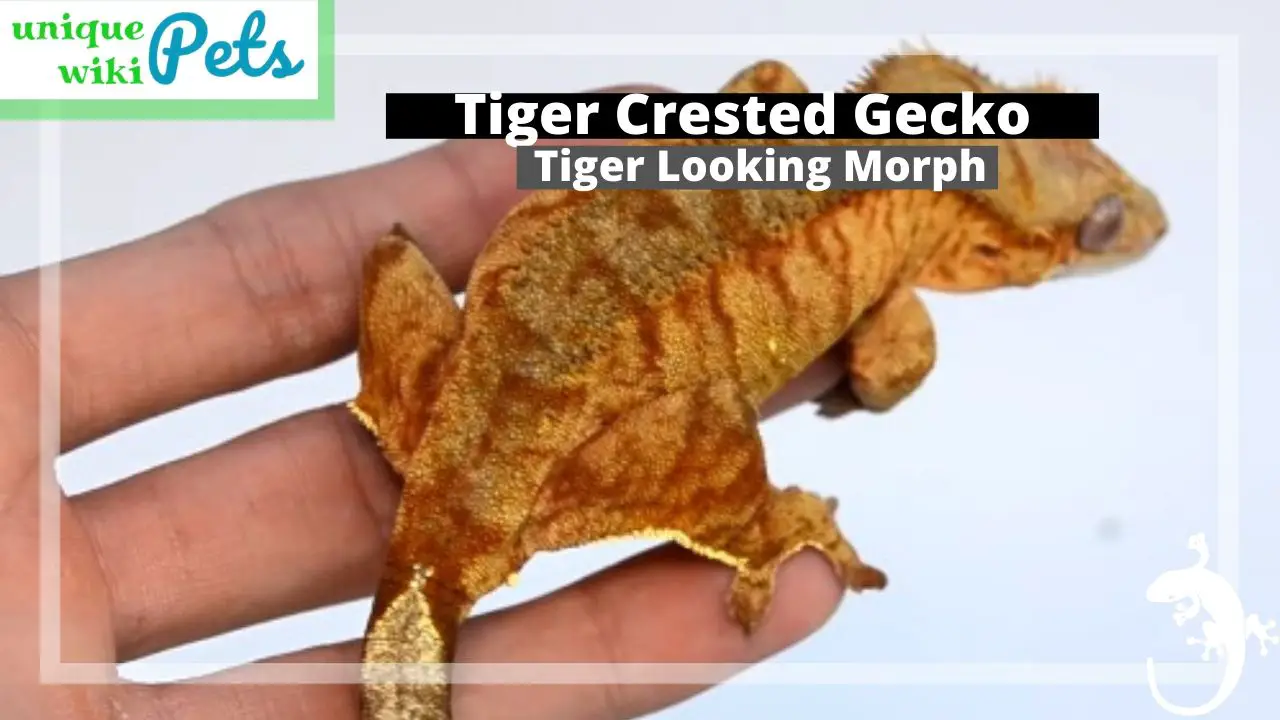
(Source: TikisGeckos YouTube)
A tiger? Yes! A Tiger.
Tiger crested geckos look exactly like a tiger. Their back is filled with darker bands that run vertically down their sides. Tiger cresties come in diverse colors, which is similar to patternless and bicolor morphs.
Their color ranges from orange to olive, yellow, chocolate, near-black, and buckskin.
You may also find red tigers but are usually very rare. Red tigers’ cresties are rare, and when they fire up, the red pigment often overrides the dark pattern tiger stripes.
It is even harder to find a red tiger beyond the juvenile stage with dark and bold tiger stripes. There are also some crested geckos with exaggerated striping when compared with a regular tiger.
These tiger morphs are called super tiger, brindled, or super brindled crested geckos.
Flame Crested Geckos
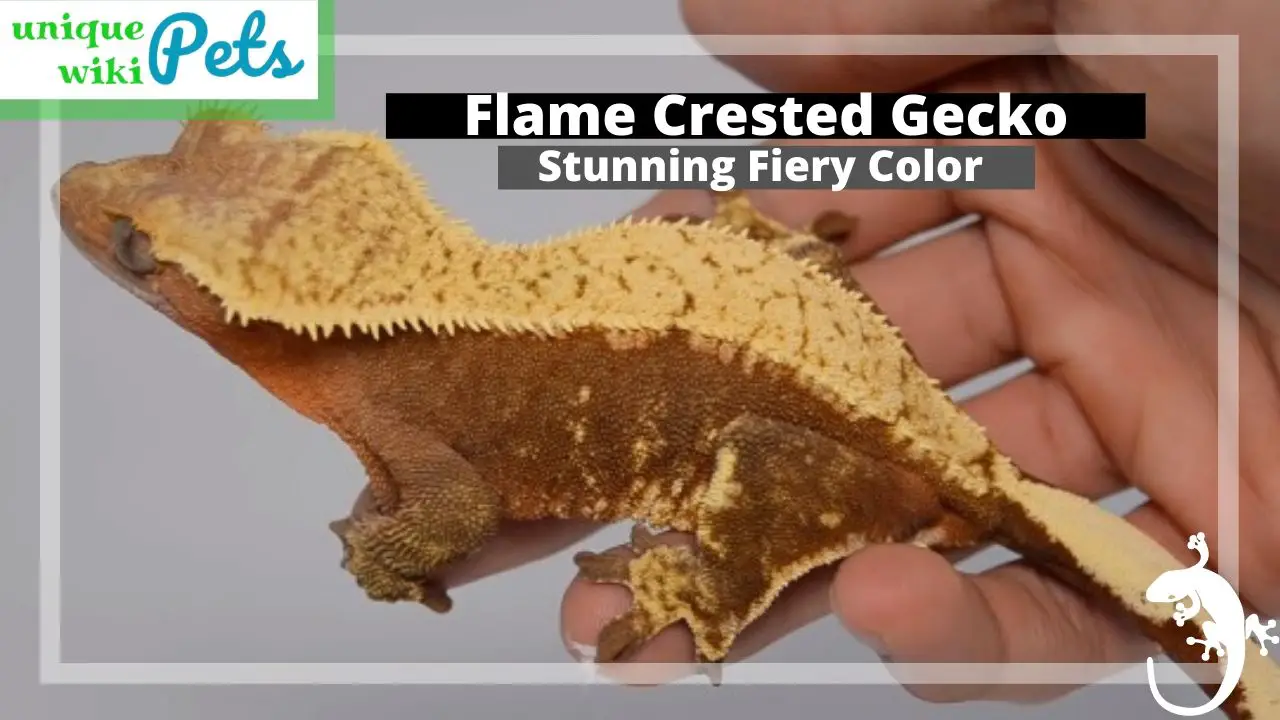
(Source: TikisGeckos YouTube)
Flame as in a fiery, and who does not want an animal with fiery color? Flame crested geckos are quite common. The best thing is that they are mind-blowing and you will love them if you love taking pictures.
These cresties are similar to bicolor morphs as they have a base color with a more defined lighter color along the gecko’s back.
However, the major difference is that flame cresties secondary color will be more contrasted and lighter than the base color.
The base of flame crested geckos can come in any color. Flame cresties have little to no pattern on their limbs or laterals. However, you will find various patterns along their dorsal that can be solid in color or unique patterns.
A flame crested gecko with a chevron or V-shaped pattern along their dorsal area is called chevron flame crested gecko. You may also find tiger flames but are usually very rare.
However, the tiger stripes on juvenile flames will disappear as they get older.
Harlequin Crested Geckos
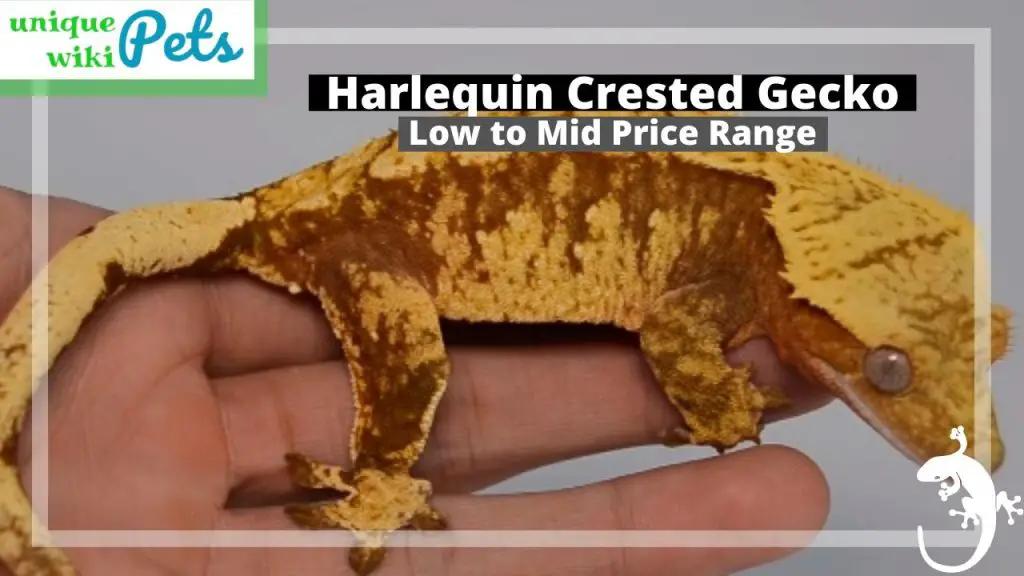
(Source: TikisGeckos YouTube)
If you think flame cresties are stunning, you may change your mind once you see a harlequin crested gecko.
Harlequin crested geckos are similar to flame cresties but with more patterns. They usually have one color over the major part of their body known as the base color.
They have a second contrasting color found on their head, dorsal region, and the legs. Harlequins will be considered flame crested geckos if they have minimal patterning on their body.
The base color of harlequins is usually red or near-black with yellow, cream, or orange.
An extreme harlequin morph occurs if a crested gecko has many white or cream patterns, and their body pattern breaks into the creamy dorsal area.
In young crested gecko, you can easily mistake extreme harlequin patterning for a tiger morph.
It can even be confusing during the adult stage as you will find it hard to differentiate between a light-based gecko with tiger patterning and a dark-based gecko with extreme harlequin patterning.
Harlequins are among the more sought after crested gecko morphs. You will find them in the low-to-mid price range.
Pinstripe Crested Geckos
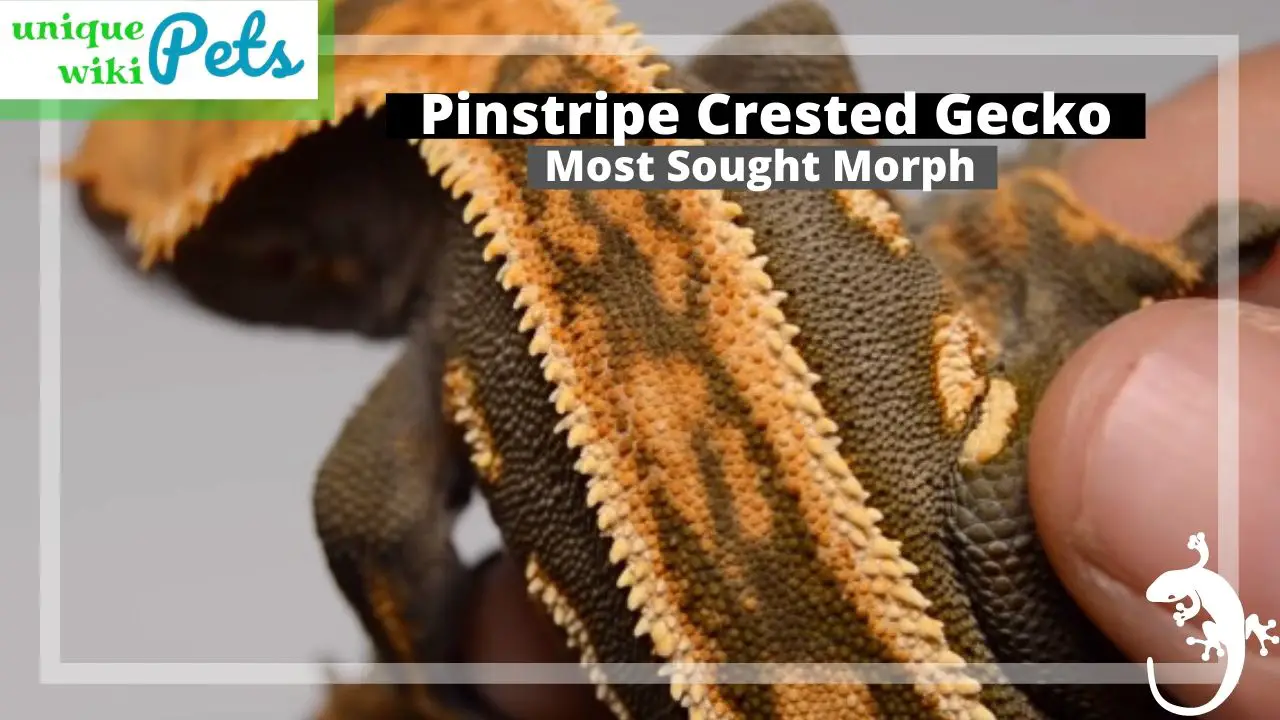
(Source: TikisGeckos YouTube)
Pinstripe cresties are among the most sought after crested geckos out there. It usually consists of a group of traits or even with a specific look such as tiger, flame, or harlequin.
You can identify classic pinstripe morphs with the raised, cream-colored scales that pass along the outside of their dorsal area. The rest of the back will have flame patterning or with solid cream.
There are full pinstripe and partial pinstripe morphs.
However, a full pinstripe morph is more desirable than a partial pinstripe. If your crested gecko’s pinstripe is broken and does not form over 80%, it is known as pin dashing and will not be termed pinstripe.
The common pinstripes are flames and harlequin pinstripes, but you may find rare tiger pinstripes.
There are variations from classic pinstripe known as reverse pinstripe and phantom pinstripe. A reverse pinstripe morph features a dark line under the dorsal scales where there will be a classic pinstripe.
A phantom pinstripe features muted colors in the dorsal area, such as a flame back similar to the rest of the body.
Dalmatian Spots
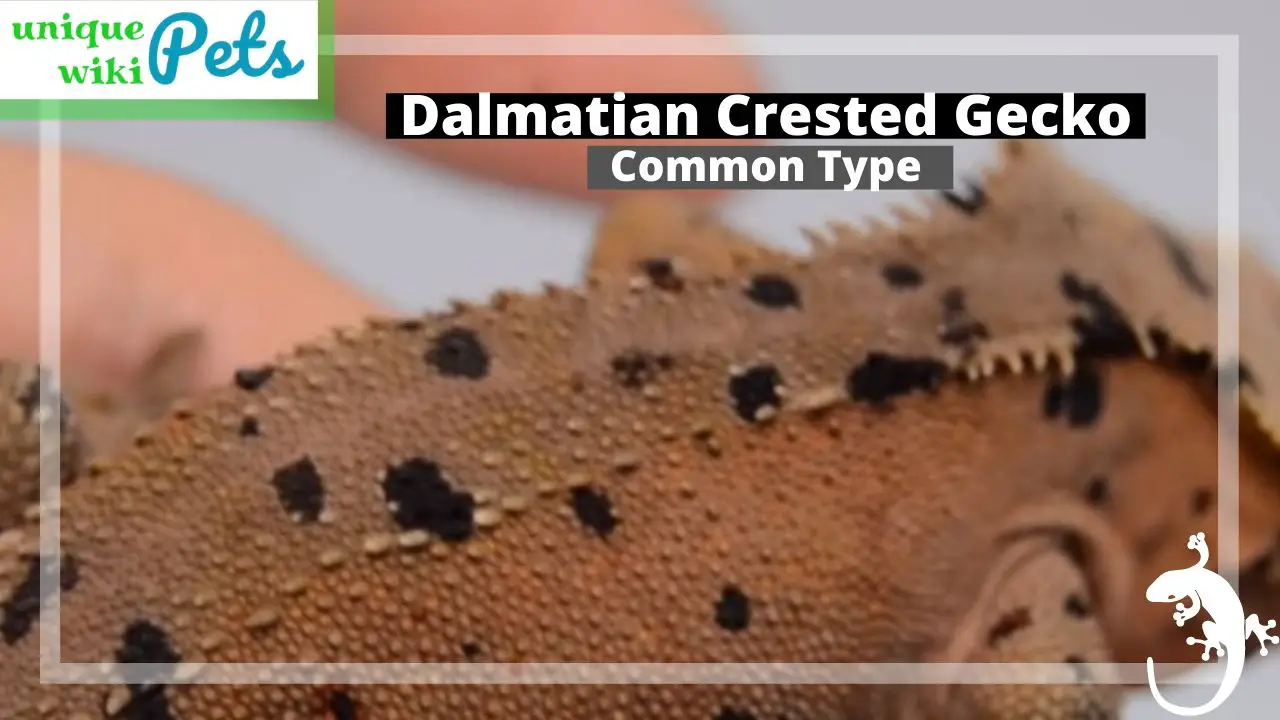
(Source: TikisGeckos YouTube)
You will find dalmatian spots on all cresties, even with those with other visible traits. Dalmatian spots on crested geckos are regarded as an independent trait. The spots come in varying sizes and colors.
The most common spot is the black spots, but there are some geckos with red, green, and even white spots. There are some geckos with larger than normal spots known as big spotted dalmatians.
Big dalmatian spots with irregular shapes can be described by inkblot or ink spots.
Super dalmatian morphs are when crested geckos have an abundance of spots or with large spots. You will find dalmatian spots on any morph or color.
New to crested gecko? Check out the crested gecko care sheet now! We had listed out all the things you need to know about crested gecko as pets. Check it now!
However, many keepers love when the dalmatians are patternless so that the spots can speak for themselves.
Hatchling and juvenile cresties do not usually show dalmatian spots at young ages. However, you can find pale patches where the spots can develop as they grow up. Basic dalmatians with some spots are common.
However, you can pay over $1000 for gecko totally covered in big black inkblot spots.
White Spots
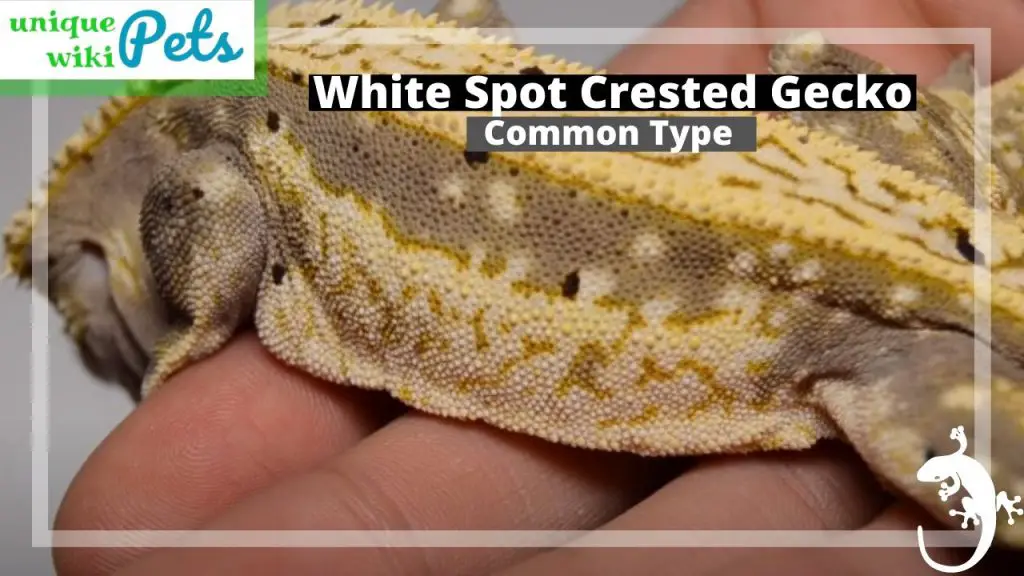
(Source: TikisGeckos YouTube)
Since captive crested geckos began, it is common to find portholes (tiny white spots) on crested geckos. The tiny white spots can be found on the crested geckos’ chest, toes, belly, or nose.
The spot cannot be considered a genetic trait for whiteness but as a result of unfinished pigmentation during incubation.
A newer trait of white spot in crested geckos is larger white spots. The white spots are common around the dorsal part of cresties, and the spots drip down their body.
Many people are hoping that this new trait is further developed as a morph or trait.
Crested Gecko Colors
Firing Up
In the previous article about crested gecko color-changing, we mentioned about firing up.
It is a process used by crested geckos to change their colors. Firing up is usually based on cresties’ mood and environment. Firing up of crested geckos can indicate a state of alertness or reaction to the environment.
Crested geckos color usually changes to a darker tone at night when your gecko sleeps. This process is known as firing down.
However, there is no need to worry if your gecko is always fired up or not because it does not indicate that anything is wrong with it.
Firing up and down of crested geckos can be caused by several factors. But this does not mean that they are uncomfortable, stressed, or upset.
Firing up in crested gecko aids in camouflage, communication with other geckos, indicating behavioral state, or simply responding to specific stimuli like humidity, smells, etc.
Firing up is more intense in brighter colors like orange, red, and yellow cresties or in a deep black or brown gecko kept in the dark base.
Color Changing
It should not come as a surprise to you that crested geckos can change their color. Color change in crested gecko can be caused by aging. This is why hatchlings and juvenile cresties do have different color shades than adults.
However, crested geckos have limited ability to change color and cannot change color on their own volition. They can only change colors when they grow up exposed to a specific environmental trigger.
Crested geckos can also change their color temporarily during their shed cycle.
Color Patterns
Creamsicle
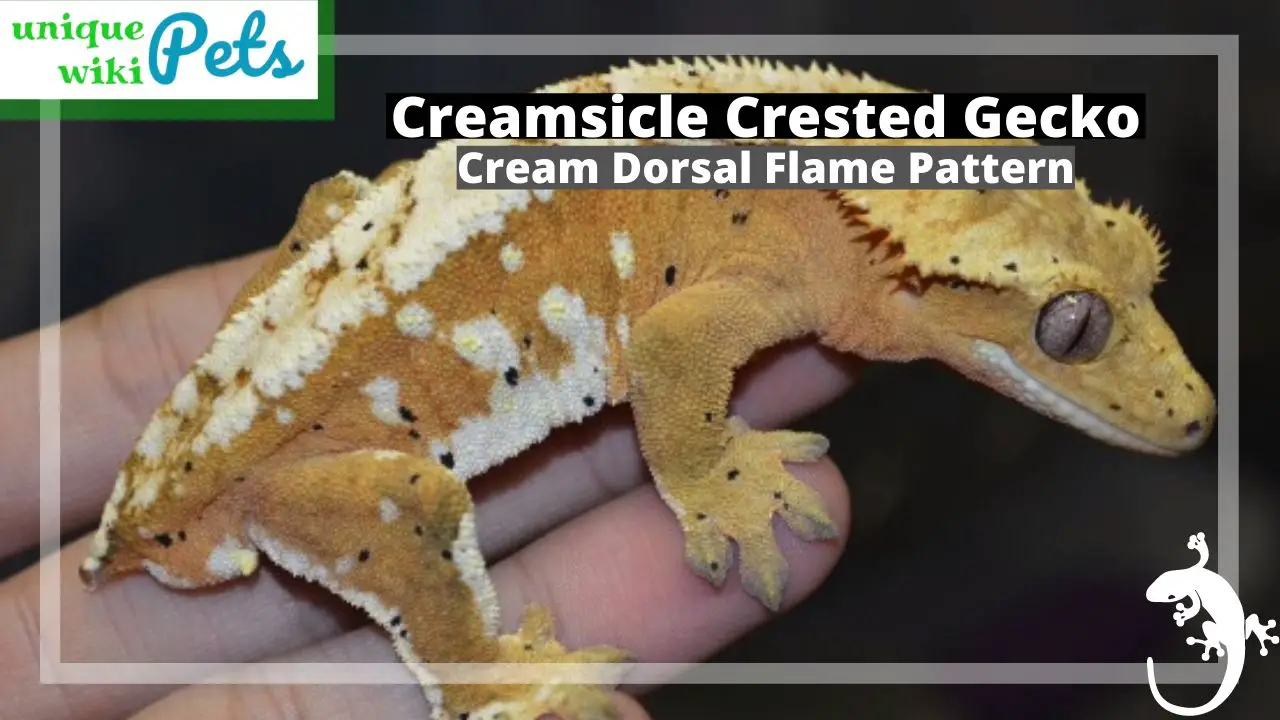
(Source: TikisGeckos YouTube)
Yummy right!!! I know your sweet tooth was in hyperdrive once you saw the word creamsicle. Now imagine how mesmerizing the creamsicle crested gecko will look like.
This crested gecko morphs a bit similar to a creamsicle in appearance. Creamsicle morphs typically have a cream dorsal flame pattern.
It usually features an orange background with white or cream stripes on the back and the head.
Although this morph was originally reserved for geckos with orange and cream or white patterns, many breeders are now labeling geckos as creamsicles morph if their base pattern is either a vibrant yellow or orange with a white-cream pattern.
This morph can be a variation of extreme harlequin, harlequin, or flame. However, it can also display other traits like solid back, dalmatian, and pinstripe.
Blonde
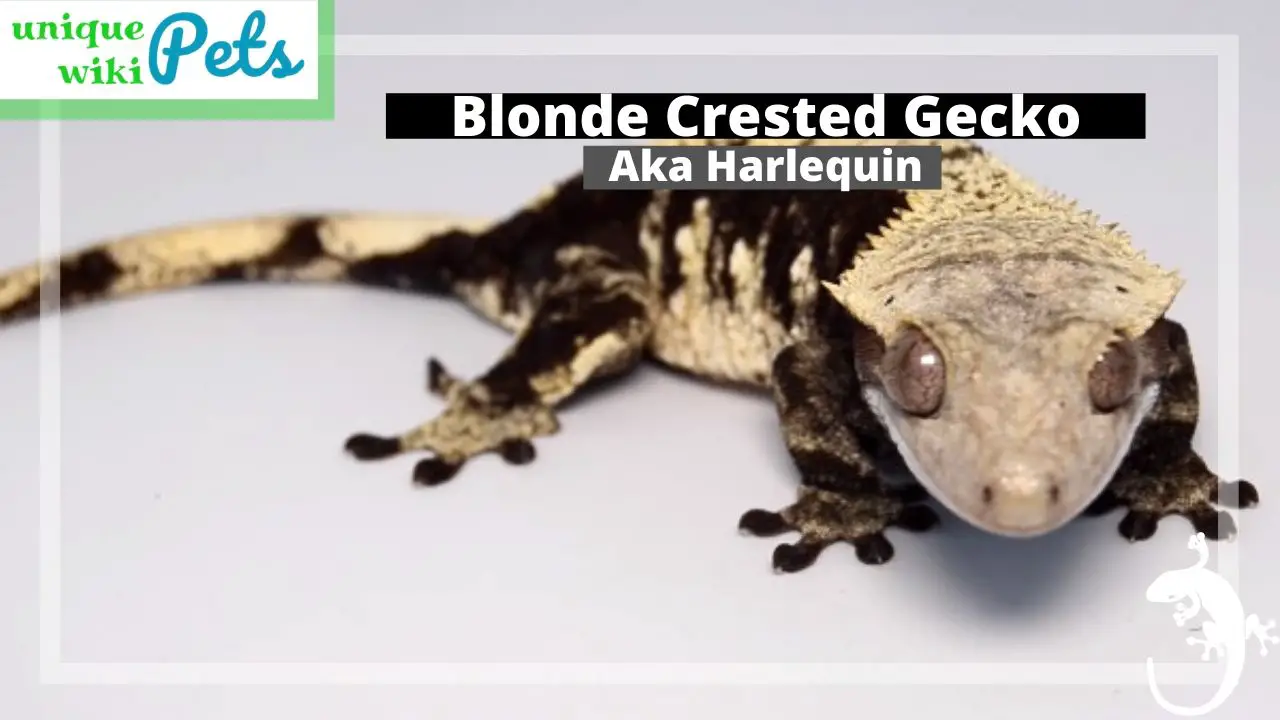
(Source: TikisGeckos YouTube)
Blonde cresties are usually dark flames with or without pinstripes. Blonde can also describe a harlequin gecko with a very dark base color with a very light pattern color combination.
You can best represent a blond harlequin with an abundance of white color on the top of their head and along the dorsal strap.
This means the white coloration will look like a full and unbroken line that extends from the tip of the nose down back, all the way to the tail base.
Halloween
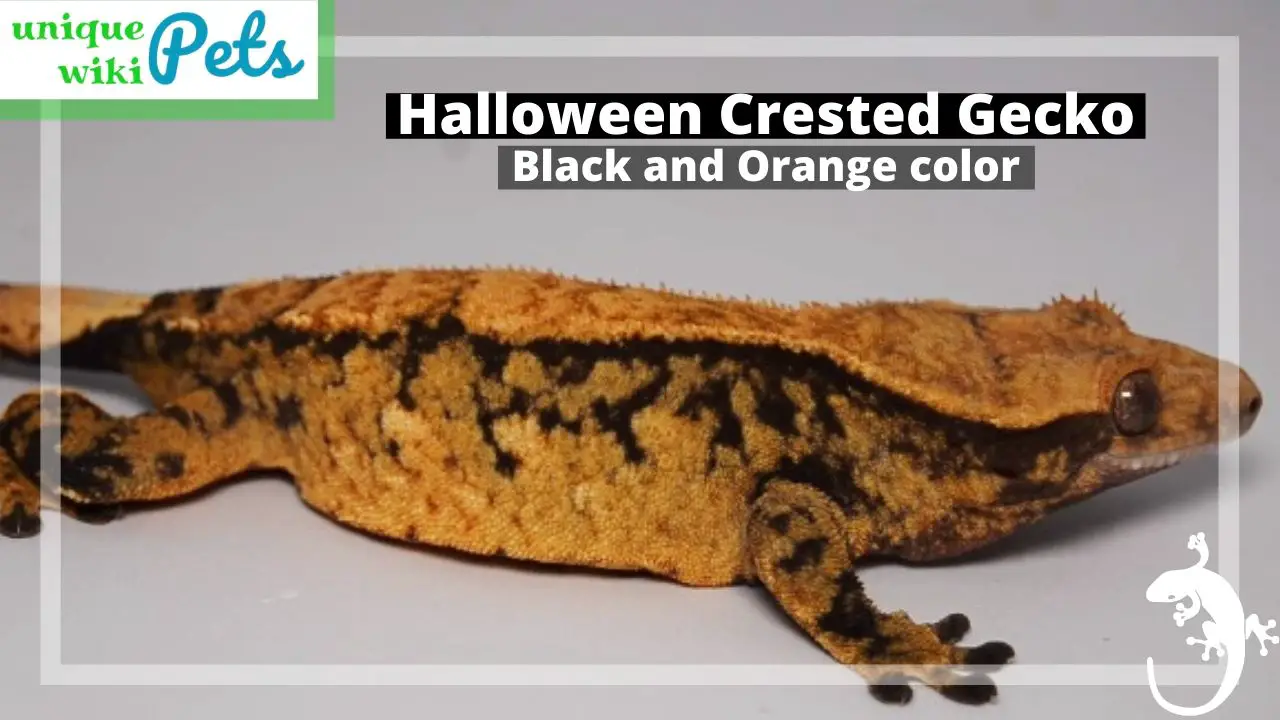
(Source: TikisGeckos YouTube)
Halloween costume for your cresties?
Halloween crested geckos are known as harlequins cresties with dark near-black and orange markings. Halloween morphs have two very distinct colors, namely black and orange.
This gecko may look grey and orange or lavender and orange when fired down. But once fired up, Halloween cresties have a black base color with orange pattern color.
The orange pattern color can appear as bright neon, light, or dark orange. However, the pattern needs to be orange but not white, cream, or yellow.
Tricolor
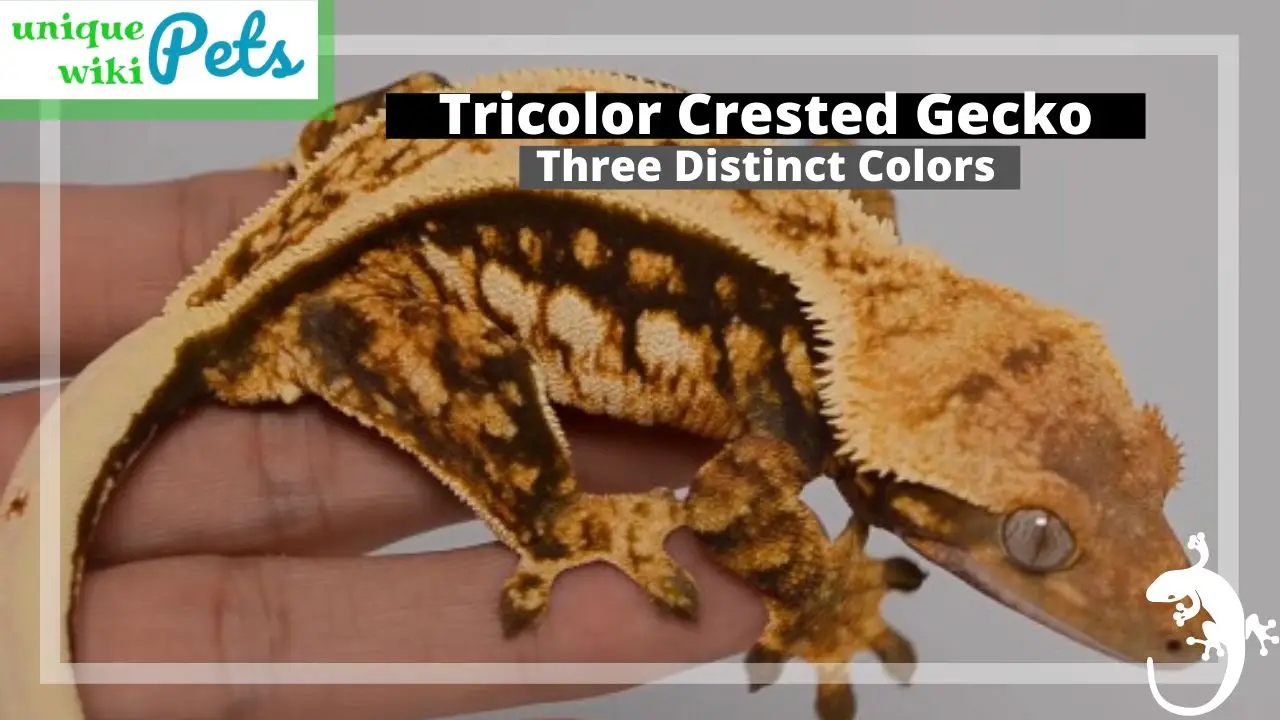
(Source: TikisGeckos YouTube)
When a crested gecko shows three distinct colors, it is referred to as tricolor. Although tricolor is a subjective morph, many breeders label geckos as tricolors when each color represents a third of the overall gecko’s color or pattern.
You will find tricolor patterns on numerous geckos that have different base colors from black to red. Harlequin gecko, also called Calico, can display the tricolor trait.
However, it will display a lavender or red base color with two pattern colors, usually orange or yellow combined with cream or white.
A standard harlequin is separated from tri color because of the abundance of white or cream coloration in the pattern. You can also find tricolored crested geckos in red and yellow.
Mocha and Cream
Mocha and cream morph is also referred to as mocha morph. Mocha morph is common in harlequin gecko that displays a brown base pattern when they are fired up.
Although many geckos can display brown colors when unfired, it is best to note that mocha cresties fired color must be brown. However, the darker and more vibrant the brown, the better the morph.
Mocha crested geckos are usually brownish to tan in combination with cream markings. The color is not usually orange and blonde.
Cream on Cream
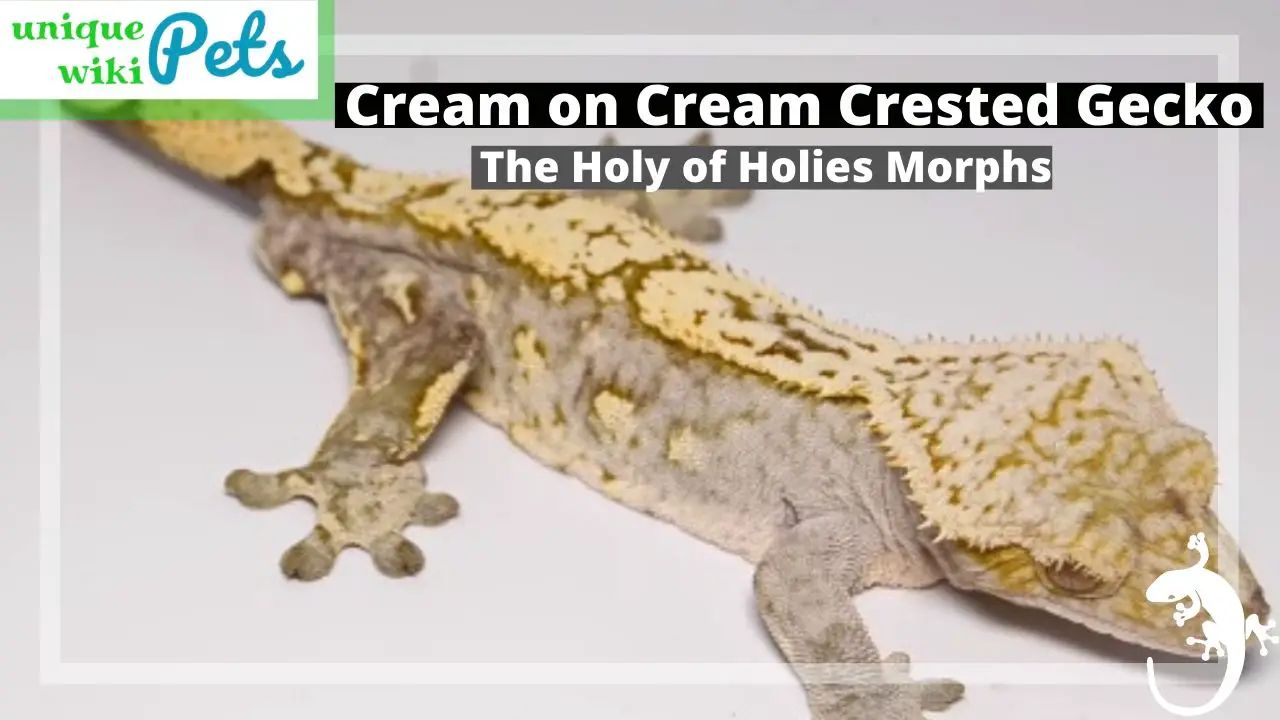
(Source: TikisGeckos YouTube)
The cream on cream morph is considered among the holy of holies morphs out there. It is also regarded as the creamy goodness at its finest. It is a very rare color combination of light-colored cresties with a cream dorsal.
The cream morph is similar to flame morph. You will find a pattern on the back and head with a creamy white color.
Wild Type Crested Geckos
Many reptiles that display wild-type patterns and colors are referred to as normals. However, there is no normal phenotype in crested geckos. This is because you will find a variety of colors and patterns in the wild.
Although many consider brown, buckskin, or olive geckos normal, there is a huge difference between them. Through selective breeding in captivity, breeders can improve upon the wild type cresties.
Some of the perfect examples of selective breeding in captivity are extreme harlequins and full pinstripes.
Structure
Color is not only the prerequisite to the quality of crested geckos. Lots of cresty owners prefer big, wide heads with bold crests on the solid body. Crested geckos with wide heads are known as crowned.
According to theory, a crested gecko with good structure comes from a long and cool incubation period. Although genetics plays a role, breeders have found a correlation between winter babies and good head structure.
Morphs vs. Lines
Morphs are used for the general description of the physical characteristics of an animal. The term line is used to describe the specific breeder’s offspring from selective breeding.
Lines can be a source of important information when a breeder is known for a specific color, traits, or other characteristics. However, many breeders used the term line interchangeably with morph.
Breeders could produce from a line only if the breeder pairs came from a particular stock. However, if you produce offspring from parents of different lineages, you will not call them one specific parent line.
You should not use the line term if you produce similar-looking offspring from unrelated animals for ethical reasons.
Many breeders referred to designer morphs as lines, but it can get tricky if another breeder also breeds similar animals like citrus, cream on creams, etc.
Lots of crested gecko breeders avoid naming their lines in this way, not to confuse beginners.
New to crested gecko? Check out the crested gecko care sheet now! We had listed out all the things you need to know about crested geckos as pets. Check it now!
Basic Genetics
Their normal appearance masks the genetics behind the phenotypes of animals. Some genes are recessive, while some are dominant.
For instance, if you breed a recessive albino gene with another albino gene, all of their offspring will be albinos. However, if you breed a recessive albino phenotype to the normal phenotype, the offspring will all look like the normal parent.
They will still carry the recessive albino gene within them but will not show in their appearance. The offspring are called heterozygous, which means two different genes.
If you then breed two recessive heterozygous albinos, they have one in four chances of producing an albino, one in four of chances of producing a genotypic and phenotypic normal.
And two in four chances of producing more heterozygous offspring.
This means, albino and genotypic normal offspring are both homozygous when compared to their heterozygous siblings.
However, it is best to know normal genetic rules. But it does not apply to crested geckos.
Crested Gecko Genetics
It can be quite hard to compare crested gecko genetics to other reptiles like ball pythons and leopard geckos. Unlike more documented reptiles, crested geckos are polygenic (multiple genes controlling their phenotype).
Crested geckos’ genetics are less predictable as there are no heterozygous for any specific morph. This means what you see is what you get.
You will get cool things popping out randomly, but you will selectively breed them through multiple generations.
For instance, when you breed dogs from two different breeds, such as labrador and pug, you will not have a 25% chance of getting full Labrador or Pug and will have a 50% chance of getting Labs that carry Pug genetics.
You will get little puppies that will take some characteristics of their parents while also looking different from each other.
If you want to develop a morph or trait in cresties, it is best to pair the same morphs together, such as pinstripes to pinstripes, etc. However, you may not get what you want if you try an oddball pairing or use a unique specimen.
Before you can define a trait, it will take several generations, which means lots and lots of baby geckos. You should be ready to house them or find a home for them.
However, lots of pet owners prefer buying geckos with a traceable lineage for their morphs.
Color Cells
Color cells in crested geckos are known as chromatophores. It helps in producing color pigments that we all see. There is a wide range of chromatophores, and they are named according to the color pigments that they produce.
Melanophores produce melanin; pheomelanin produces orange/rust red; eumelanin produces brown or black. Xanthophores help to produce a yellow and red color.
Another type is iridophore that produces a blue color. This is done not by pigmentation but by the refraction of light from the compounds found in the iridophore.
Furthermore, iridophores can also reflect white and are known as leucophores.
You should keep in mind that this is a simple rundown of color cells and pigment in animals. Little information is known about the color pigment composition of crested geckos.
And it is up to breeders to experiment and find the specific expressions of the color genes.
Note, we cannot create a new color gene but alter the expression of the pre-existing pigments.
Albino Crested Geckos?
In mammals, albinos refer to the color white. Albinism does not work well with other vertebrates. However, it occurs because of faulty melanin production, and it varies in degrees.
Since crested geckos can produce red and yellow pigments, a better term for albinism should be amelanistic because of the lack of black pigment melanin.
Another term is hypomelanistic, which means a reduced amount of melanin, and it is similar to the problem associated with pigment cells in albinism.
There are also leucistic animals that lack all body pigment but have color in their eyes. This is because, during development, these structures diverge for color development in the eyes.
There are different types of albinos known as T- and T+
T- albinos do not make melanin or its precursors and are usually very light. This occurs when either the gene is missing or switched off.
T+ albinism makes melanin, but there is a malfunction in the gene, so it is not fully expressed. This can cause brown shades and can lead to hypomelanism.
New Morphs?
Most pet owners want the latest and greatest looks in their pets. However, it is hard to discover new morphs in crested geckos. There have been some notable differences in crested gecko morphs in the past years.
However, many disagreed on whether the newest looks are actual morphs or lines. Some of the new looks available now are stated below.
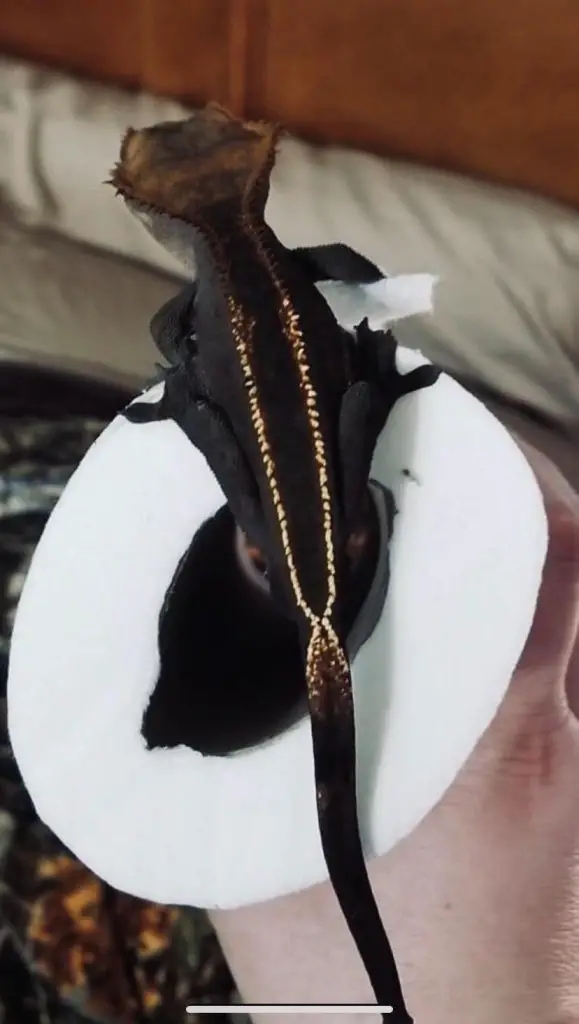
Does Cross Morphs Breeding Create New Morphs?
You can interbreed cross morphs to produce viable offspring. However, the offspring will display a mixture of colors and will show color patterns if a parent has color patterns.
It is best to develop a new trait of crested gecko by pairing the same morphs together.
White Patterning
One of the breeders’ major goals since the Harlequin morph was formed was to breed cresties selectively to increase the amount of cream or white on the body. The breeding of highly patterned cresties has produced extreme harlequins.
You will find two lines of white patterned geckos known as AC Reptile’s Whiteout and Pangea’s White-walled.
However, white-walled is now more generic, and you will find geckos outside of the line termed white-walled.
The term white-walled is used for a crested gecko with a large swath of solid white on the sides. It may have lateral stripes, and the pattern does not affect the belly color.
However, many breeders believe that a gecko must be a harlequin to show this trait. Flames can have an accumulation of white on their body but not the limbs.
Another line of crested geckos with high white patterning is the lily-white crested gecko. They display a co-dominant white pattern that forms visual heterozygous.
Piebald Crested Gecko?
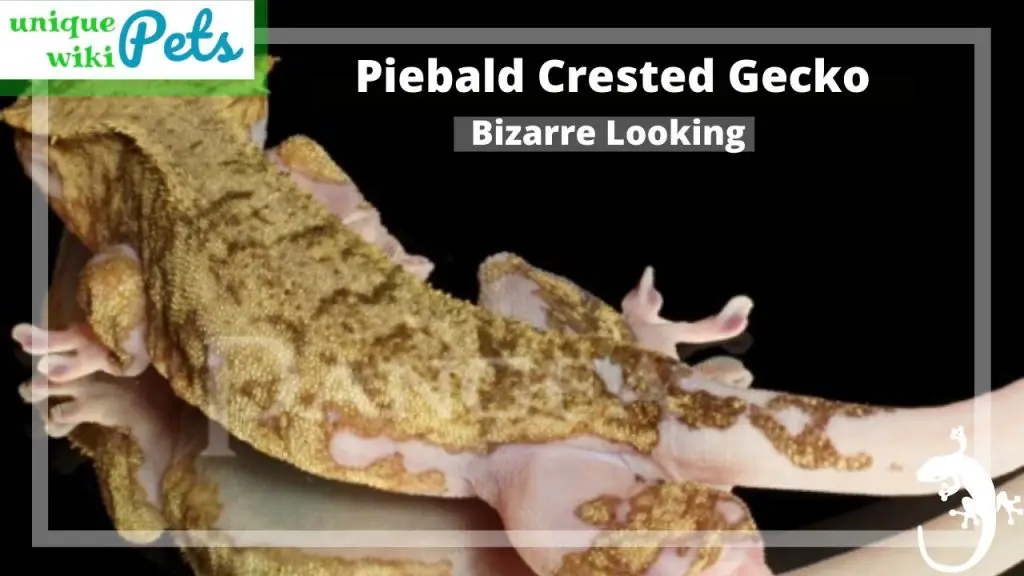
(Source: TikisGeckos YouTube)
Piebald, also known as Patient Zero, is among the most bizarre-looking cresties out there. Matt Parks owns the gecko at Pangea Reptile, LLC. Parts of its body lack pigment.
Although it is unknown whether it is a passable trait, the breeder hopes to create a pied version of crested gecko similar to a ball python pied morph.
Soft Scale
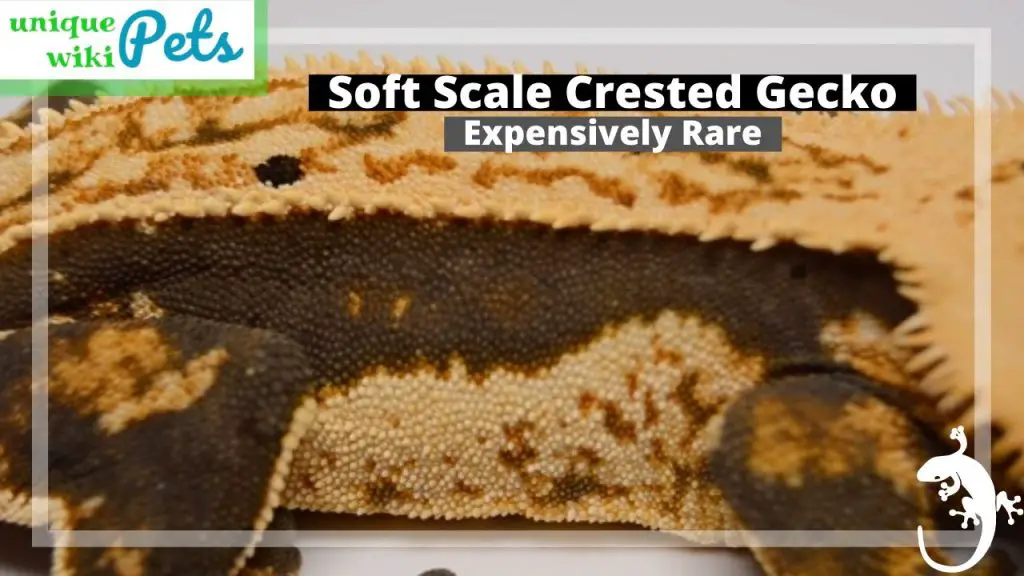
(Source: TikisGeckos YouTube)
This is a new structural trait that can be called a morph. The AC Reptiles group developed it. The soft scale morph is related to the Whiteout line as the female produces the first Whiteouts with a Soft scale.
You can only feel their soft scale by touching them. The scale looks like velvet and feels like silk. These geckos are rare, and you will need to pay thousands to get one.
Axanthic or Anerythristic Mutations?
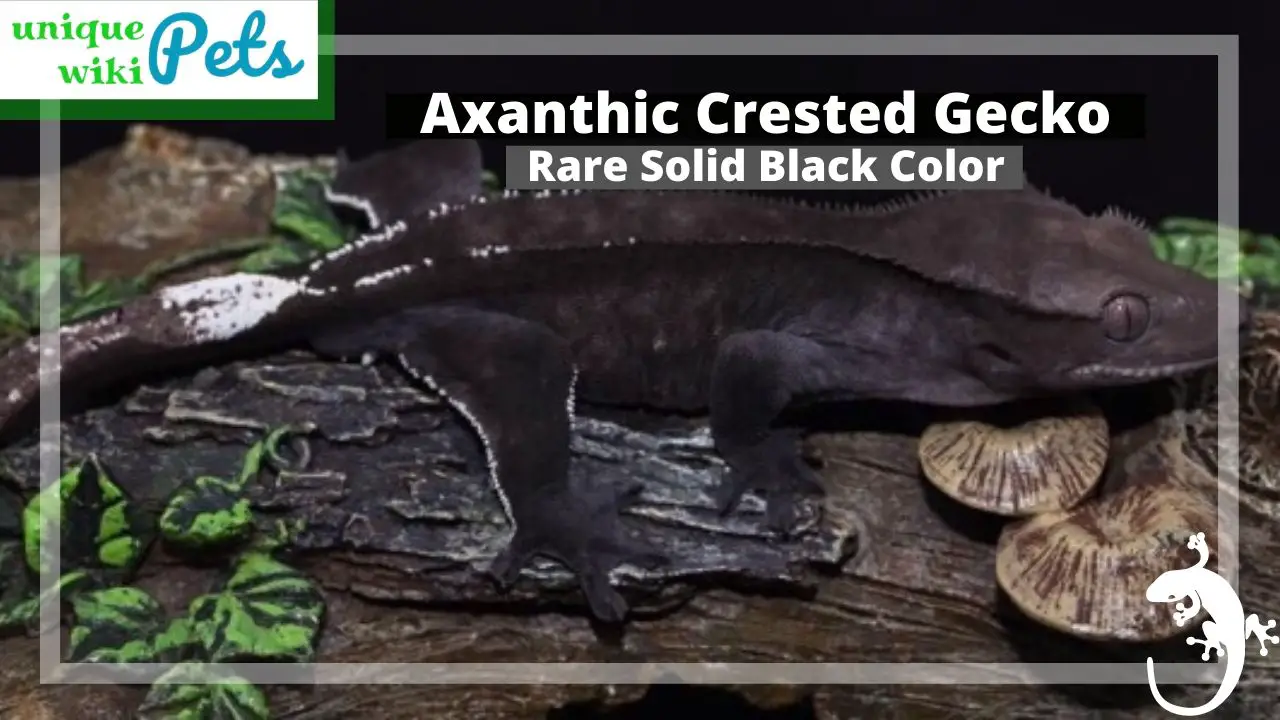
(Source: TikisGeckos YouTube)
The existence of axanthic crested geckos is kind of a controversial phenomenon. Axanthic simply means a lack of yellow. Animals with this trait display only blues, blacks, greys, whites, and silver, based on the other scale or color traits.
An erythristic mutation eliminates the expression of red pigment in a species. Normally, if a species expresses both red and yellow pigments, an axanthic may have grey/silver with a cool color tone.
However, an erythristic mutation will be cream/white with a warm tone. This mutation can produce a solid black-crested gecko.
Stop Looking for Dropped Tail Crested Gecko
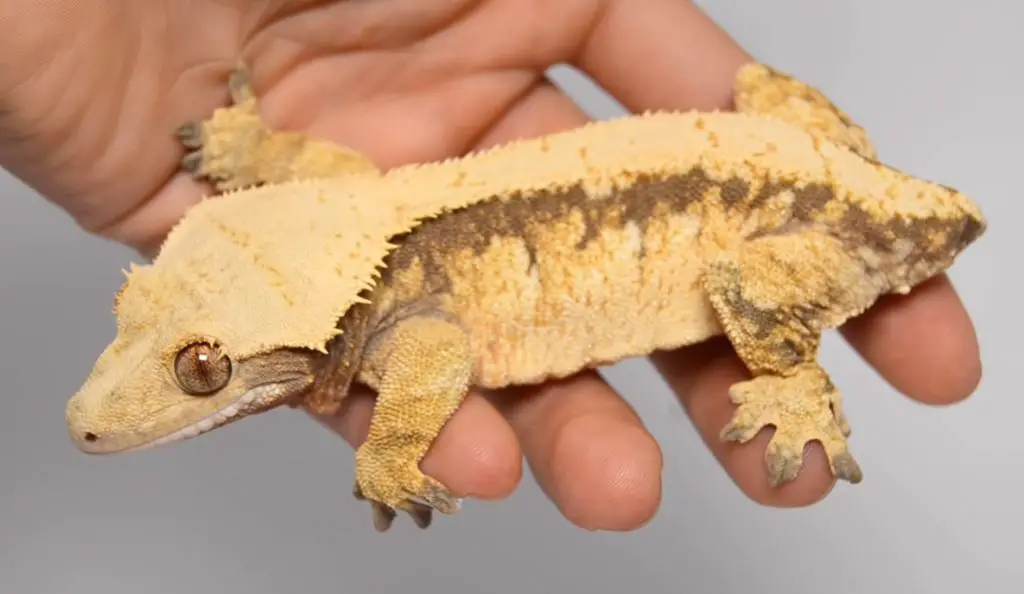
Some people consider a dropped tail crested gecko as a unique look. However, tail loss in crested geckos occurs when a gecko is over-stressed or feels threatened.
Crested geckos drop their tail as a defense mechanism to distract predators while they flee to safety.
However, some crested geckos feel that humans are predators and may throw their tails at us. Some crested gecko breeders deliberately make cresties drop their tail because people are on the seeking for them.
When buying a new crested gecko, it is best to check if they are healthy. Some of the signs to determine if they are healthy are:
- Clear nose and vent
- Active and alert
- No visible ribs or pelvic bones
- Straight spines
- Healthy skin with no unshed skin, etc.
